Dublin Airport's Runways
Dublin Airport has three runways:
- 10R/28L (South Runway)
- 10L/28R (North Runway)
- 16/34 (Crosswind Runway)
The use of each runway is carefully managed based on factors such as safety regulations, wind direction and weather conditions, operational requirements, planning conditions and essential maintenance. This approach helps ensure the safe and efficient movement of all aircraft at the airport.
How Runways Get Their Names
Runway names are based on the direction (or heading) an aircraft faces during take-off or landing. This heading is measured in degrees from a compass, where:
- 360° points north
- 090° points east
- 180° points south
- 270° points west
Each runway is assigned a number based on the compass heading, rounded to the nearest 10 degrees (that is, with the last zero omitted). For example:
- Runway 10 faces 100° (towards the east)
- Runway 28 faces 280° (towards the west)
- Runway 16 faces 160° (towards the south)
- Runway 34 faces 340° (towards the north)
For parallel runways, an additional letter—“L” (Left) or “R” (Right)—indicates their position when viewed from the direction of approach:
- Runway 10L is the left runway of the pair when approaching from the east, while Runway 10R is on the right.
- The same applies for Runways 28L and 28R when approaching from the west.
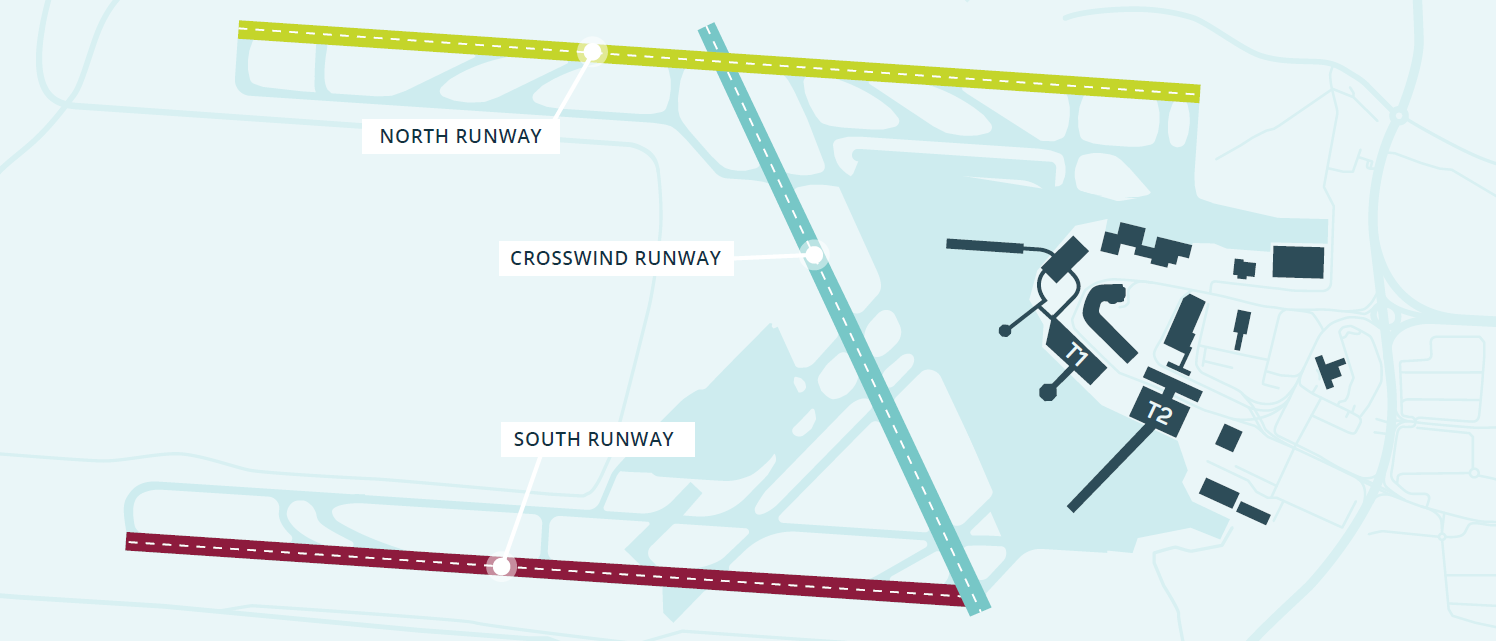
At Dublin Airport:
- 10R/28L is the South Runway
- 10L/28R is the North Runway
- 16/34 is the Crosswind Runway, used occasionally based on wind conditions and operational needs
This naming system helps pilots and air traffic controllers to communicate clearly, ensuring safe and efficient runway operations.
Aircraft Operations on the Runways
The primary factor determining the direction of aircraft take-offs and landings is the wind. For aerodynamic reasons, aircraft generally take off and land facing into the wind, as this provides better lift and control. However, if wind speeds are light (less than 5 knots), aircraft can operate with a slight tailwind if needed.
At Dublin Airport, the two parallel runways (oriented east-west) are used for most operations. The Crosswind Runway (16/34) is only used occasionally, typically when strong north or south winds make it more suitable for safe operations.
Since winds in Dublin are predominantly westerly (occurring about 70–80% of the time):
- Arrivals approach from the east over the Irish Sea
- Departures head west using Runways 28L and 28R
When winds shift and become easterly:
- Arrivals approach from the west
- Departures head east towards the Irish Sea, using Runways 10L and 10R
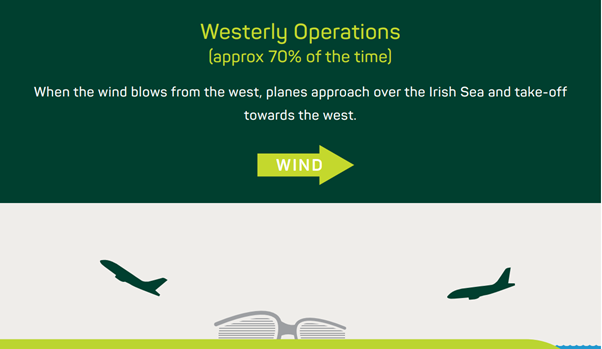
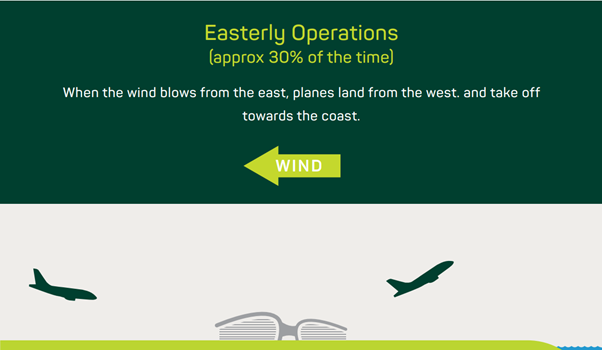
Operational Criteria
The criteria for determining which runway is used for aircraft departures and arrivals at Dublin Airport are outlined in the 2007 North Runway Planning Permission Condition 3. This operational mode, referred to as Option 7B, aims to reduce aircraft noise impact on local communities. The decision on which runway to use at any given time is determined by Air Traffic Control and is based on criteria such as weather, safety and planning conditions.
Mode of Operation 7B includes:
- Runway Preference: The parallel runways, 10R/28L (South Runway) and 10L/28R (North Runway), are preferred over 16/34 (Crosswind Runway).
- Westerly Operations: When winds are westerly (about 70% of the time), Runway 28L is preferred for arriving aircraft. Either Runway 28L or 28R can be used for departing aircraft, as determined by air traffic control.
- Easterly Operations: When winds are easterly (about 30% of the time), either Runway 10L or 10R can be used for arriving aircraft, as determined by air traffic control. Runway 10R is preferred for departing aircraft.
Westerly Operations (approx. 70% of the time)
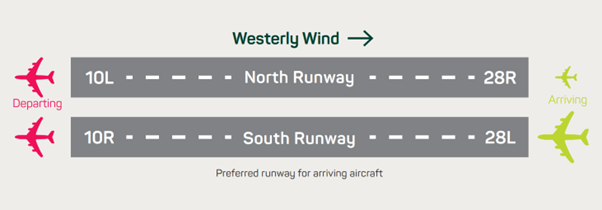
Easterly Operations (approx. 30% of the time)
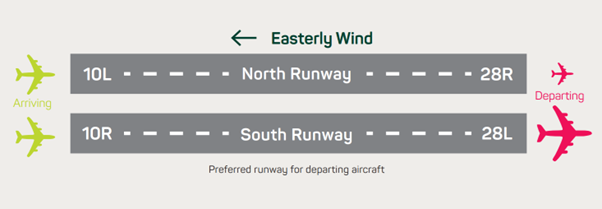
Normal Runway Operational Hours
South Runway: Operational 24 hours.
North Runway: Operational from 07:00 to 23:00. Hours may be extended or reduced for essential maintenance or safety reasons.